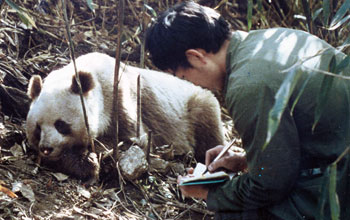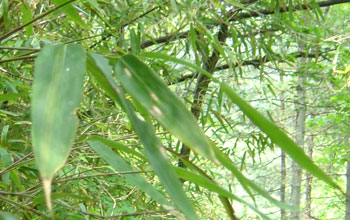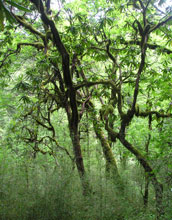All Images
News Release 12-211
Climate Change Threatens Giant Pandas' Bamboo Buffet--and Survival
China's endangered wild pandas may need new dinner reservations--and quickly, based on models that indicate climate change may kill off swaths of bamboo that pandas need to survive
This material is available primarily for archival purposes. Telephone numbers or other contact information may be out of date; please see current contact information at media contacts.

This panda is one of about 275 wild Qinling pandas that live in the study region. Their isolation has resulted in genetic variation from other giant pandas. Some of these pandas, like the one shown here, are brownish.
Credit: Yange Yong
Download the high-resolution JPG version of the image. (1.6 MB)
Use your mouse to right-click (Mac users may need to Ctrl-click) the link above and choose the option that will save the file or target to your computer.

Because bamboo is very low in nutrients, wild pandas eat as much as 84 pounds of bamboo daily, and spend at least 12 hours per day eating bamboo. A wild panda may also occasionally eat other grasses and small rodents or musk deer fawns.
Credit: Andrés Viña, Michigan State University Center for Systems Integration and Sustainability
Download the high-resolution JPG version of the image. (526 KB)
Use your mouse to right-click (Mac users may need to Ctrl-click) the link above and choose the option that will save the file or target to your computer.

A bamboo trove in western China.
Credit: Andrés Viña, Michigan State University Center for Systems Integration and Sustainability
Download the high-resolution JPG version of the image. (1.8 MB)
Use your mouse to right-click (Mac users may need to Ctrl-click) the link above and choose the option that will save the file or target to your computer.


